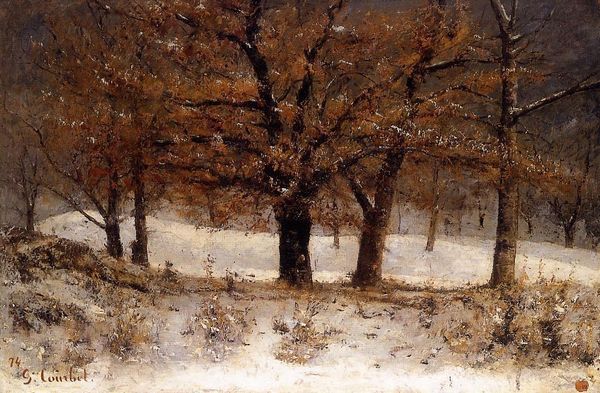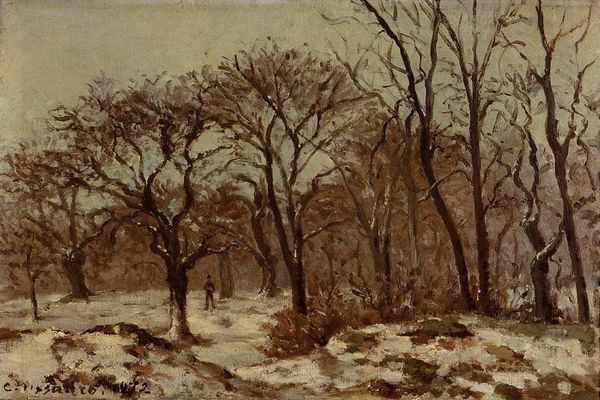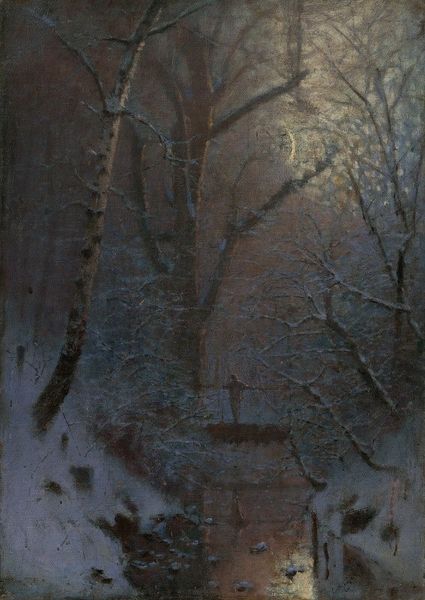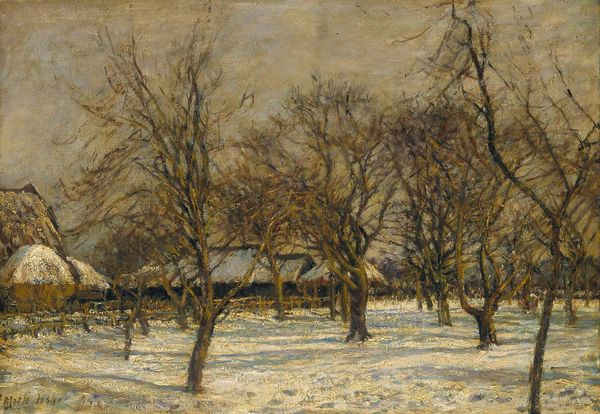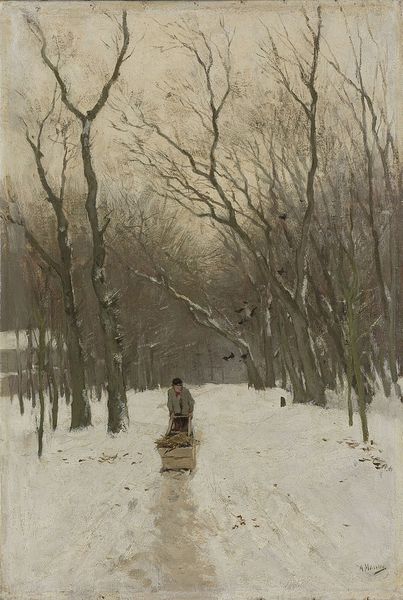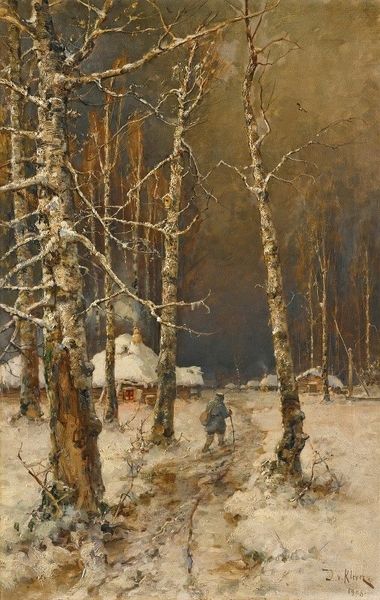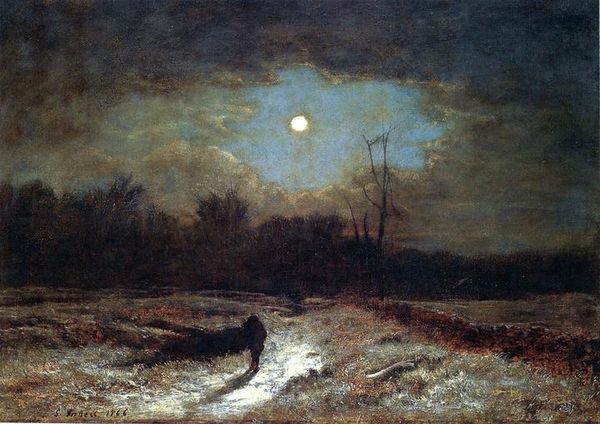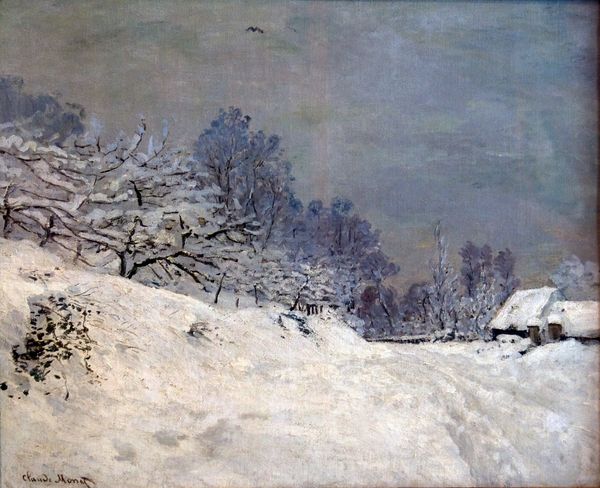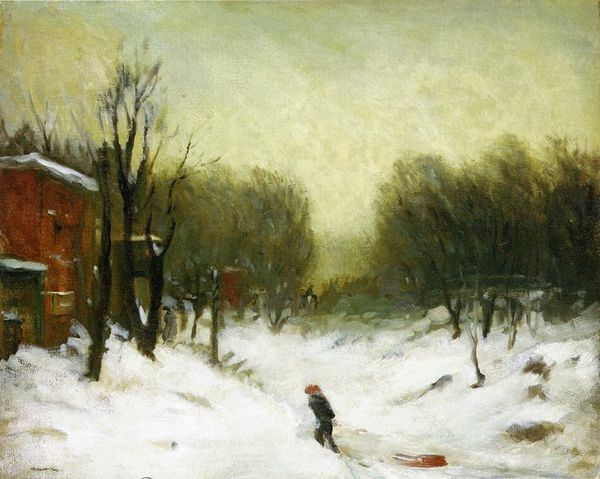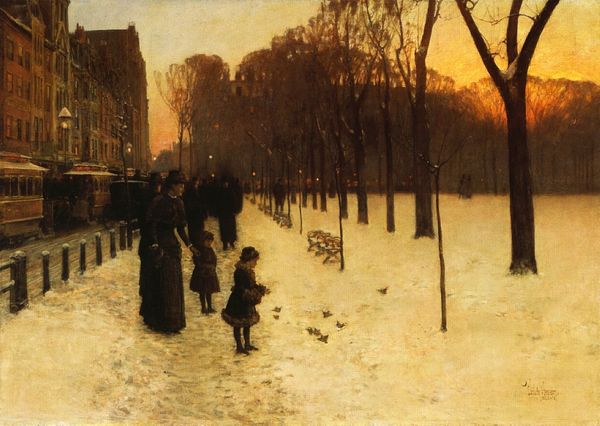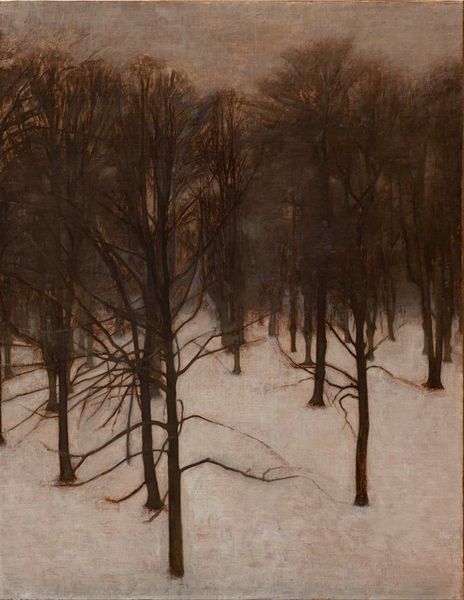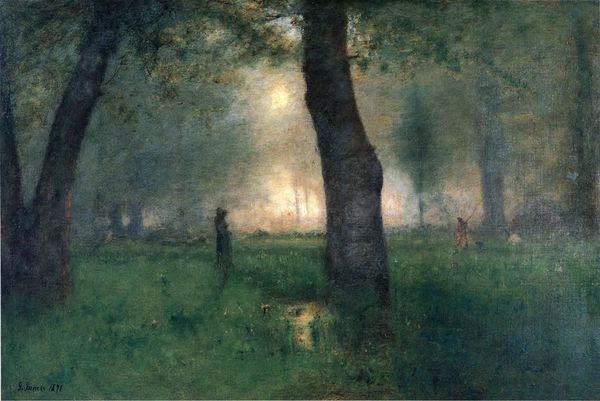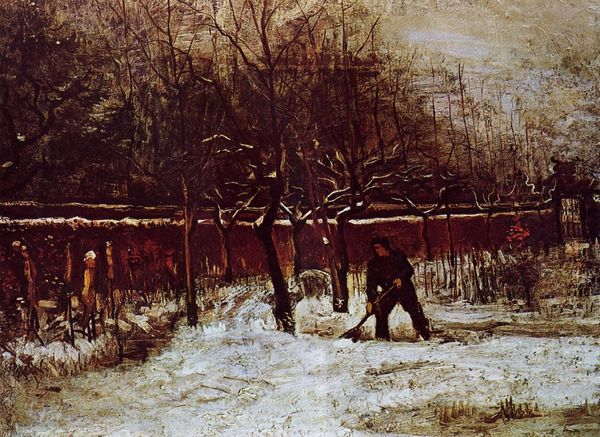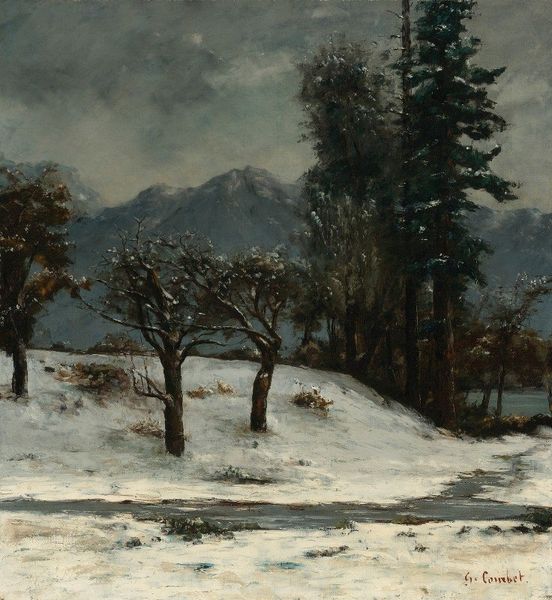
Copyright: Public domain
Curator: Isaac Levitan’s “Boulevard in the Evening,” painted in 1883, invites us into a snow-covered cityscape now held at the National Gallery of Armenia. Editor: Immediately, I'm struck by its subdued palette, that dominating dark tonality really evokes a strong sense of stillness, perhaps even melancholy. Curator: Levitan employs oil paint here in a way that almost anticipates the broken brushwork and optical mixing that became central to Impressionism, which really reflects its period and also adds to the overall somber mood. Think about how this application informs the experience of urban life. Editor: Precisely! The silhouetted figures evoke a timeless sense of loneliness, I wonder how much those isolated figures are meant to mirror or oppose each other across the boulevard? It's clearly figuration embedded in an overtly romanticist scene. The streetlights scattered along the boulevard become these symbolic beacons amidst the dark snow, they offer some type of elusive directionality for the obscured human forms. Curator: Right. He is not focused on the documentation of social interactions, or class identity as such. It really calls into question that relationship between art, urban labor, and everyday practices which seem to disappear with his broad treatment of the forms. Instead, we are given a certain mood evoked by a series of material arrangements that point to line and direction, almost diagrammatic in their execution, yet romantic at the same time. Editor: Definitely. And the very sparseness of detail pushes those emotional overtones into the fore. The way the trees reach upwards, the indistinctness of those figures… it all contributes to a visual language steeped in memory and emotional experience. We might remember from other painters of this time frame those who romanticize rural idyll, and it may not seem apparent in this canvas, but there seems to be a similar type of emotional expressionism operating on this winter night in an urban center. Curator: It's curious to consider that even now, almost a century and a half later, those material applications of paint – and those bare branches in particular – resonate and recall that visual language you are referring to in a way that defies a fixed timeframe of understanding or influence. Editor: I find myself lingering over those glowing dots that could be seen as lamplight in that stark darkness, each a spark of memory in that stark landscape. Curator: Absolutely. Examining this boulevard under a material lens alongside its symbolic weight reveals the way social elements have come to leave a lasting trace in cultural imagination and pictorial technique.
Comments
No comments
Be the first to comment and join the conversation on the ultimate creative platform.
